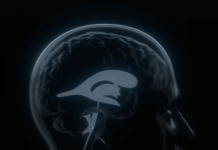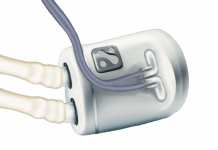The prescription app uses a smartphone or smart speaker to measure breathing.
Sound Life Sciences scored FDA 510(k) clearance for its prescription app that uses a smartphone or smart speaker to monitor respiration at home or in a clinical setting.
The tool works by allowing a smartphone or speaker to emit inaudible ultrasonic pulses that bounce off a patient’s chest and are reflected back to the device. The app uses signal processing algorithms to note any significant changes in breathing, which are then reported to the user or clinician.
“It’s critical that our contactless technology utilizes devices like a smartphone or even smart speaker platforms which are familiar to most patients, and offers healthcare providers in a telehealth setting critical information to make the most informed clinical decisions for their patients,” Shyam Gollakota, PhD, CEO and cofounder of Sound Life Sciences, said in a statement.
“Because Sound Life Sciences leverages ubiquitous devices, our technology can rapidly and unobtrusively scale to serve large and diverse populations in both urban and rural communities, especially as it does not require any additional hardware.”
WHY IT MATTERS
University of Washington researchers have studied proof-of-concept systems using smart speakers to measure heart rhythms and identify respiration changes that could signal cardiac arrest.
Sound Life Sciences, a spinout from the University of Washington, said testing for its submission to the FDA included patients with COPD, asthma, congestive heart failure and anxiety. But the company wants to expand to other clinical areas.
“We’re using this regulatory momentum to accelerate commercialization of our technology and begin to identify select partners to bring our software to market,” chief medical officer and cofounder Dr. Jacob Sunshine said in a statement.
“This is just the beginning. With this foundational clearance we have established a regulatory foothold, from which we can build out additional use cases including for respiratory chronic disease management such as asthma and COPD, opioid safety monitoring, infant monitoring, incipient respiratory infection detection and identifying when an unwitnessed cardiac arrest occurs.
“There are many clinical conditions you can point this at and we are laser focused on conditions where detecting aberrant breathing can lead to an evidence-based intervention and clearly provide value.”
THE LARGER TREND
Higher-level care is moving into the home as remote monitoring and telehealth technology has become more mainstream.
Telehealth particularly has expanded during the COVID-19 pandemic. A report from HHS found the share of Medicare visits conducted via telehealth increased 63-fold, increasing from approximately 840,000 visits in 2019 to 52.7 million in 2020.
There are also a variety of companies offering tools to remotely monitor patients, including Current Health, which entered into agreement to be acquired by retail giant Best Buy in October, and Amazon, which has been pushing its Alexa voice assistant as a monitoring tool. Others in the space include Biobeat, OnSky Health and VitalConnect.






